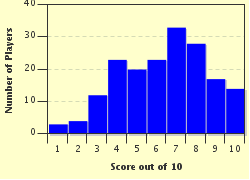Quiz Answer Key and Fun Facts
1. Careful rituals were followed during the process of mummification in ancient Egypt. One such ritual, which involved the use of several magical tools, intended to prepare the deceased for their new life by allowing them to speak and eat. What was this ritual known as?
2. As the deceased travelled west, they eventually came to a labyrinth with many portals. Which ancient text was said to contain spells which would help the deceased defeat such obstacles?
3. In order to preserve the features of the deceased, which process, said to have been invented by the jackal-headed Anubis, was often carried out during the process of mummification?
4. The dead were taken through the place of the dead, known as Duat, on a grand boat known as Mesektet which was decorated with gold, gems and fine wood. To which deity did this boat belong?
5. It was said that the dead would depart from the boat in the third region of Duat, known as Amenti, where they would be judged by the council of gods. The gods who sailed the boat, however, would continue their journey through the other regions of Duat. How many regions of Duat were there?
6. When the dead departed from the boat in Amenti, the third region of Duat, they entered the hall of Osiris where they were judged on their wrong-doings. Which of the following was NOT a specific crime which was looked at during this process?
7. After facing trial by Osiris and his forty-two assessor-gods, the dead would then have their heart placed on the Scales of Truth, with light hearts being rewarded with eternal life and heavy hearts being devoured. What was the heart weighted against?
8. In order for the Weighing of the Heart ceremony to take place, the dead in ancient Egypt must not have their heart removed. This is in contrast to the stomach, liver, lungs and intestines, which were removed and placed in canpopic jars. After whom were these four canopic jars named?
9. According to Egyptian mythology, what name was given to the plentiful land in which those who were true in heart dwelt after their judgement?
10. The Egyptians believed that one's soul (or personality) existed as an entity called the ba, which would join the ka, or life force, in the afterlife. Which of the following is commonly used to represent the ba?
Source: Author
doublemm
This quiz was reviewed by FunTrivia editor
looney_tunes before going online.
Any errors found in FunTrivia content are routinely corrected through our feedback system.

